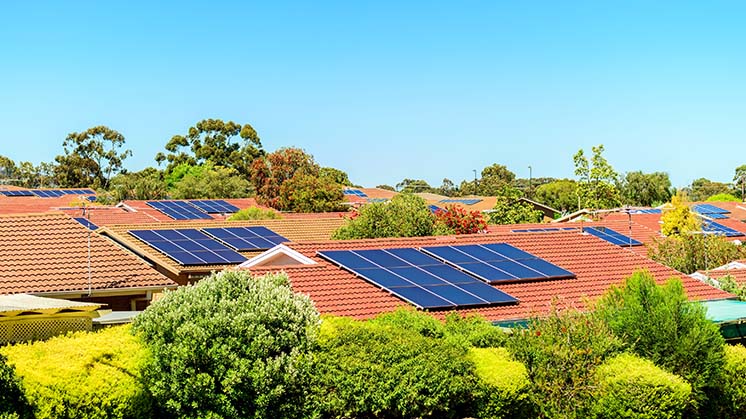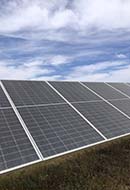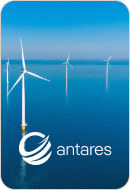Solar energy
What is solar energy?
Solar energy is an inexhaustible source of renewable energy, and is a sustainable and clean alternative to polluting energy sources. Through photovoltaic and solar thermal installations, this energy is transformed into clean electricity, contributing to the fight against climate change, avoiding tons of greenhouse gas emissions each year.

Solar energy is a form of renewable energy obtained directly from the sun. Solar radiation or heat is harnessed to generate electricity, making it a clean and sustainable alternative to conventional energy sources that produce polluting emissions.
It is an inexhaustible and abundant source of energy, as the sun continuously emits enormous amounts of radiation that can be harnessed. Furthermore, its use contributes to reducing dependence on fossil fuels and mitigating climate change by not generating greenhouse gas emissions during operation.
Solar energy is obtained through technologies such as photovoltaic and solar thermal. Photovoltaics converts sunlight directly into electricity through solar panels, while solar thermal uses mirrors to concentrate the sun's heat to generate steam that drives turbines to produce electricity.
Advantages of solar energy
The advantages of solar energy are varied, obvious in some cases, but mostly indicative of how it can provide us with clean and abundant energy. In fact, because it comes from the sun, we are assured of a constant supply for a few billion more years, making it a renewable energy, coming from an inexhaustible source.
The next most important advantage is that solar power generation does not produce greenhouse gas emissions, which helps mitigate climate change and reduces the environmental impact of its operation. Related to this, another advantage of solar energy systems is that they tend to have low operating and maintenance costs, which can contribute to a more stable and predictable energy supply.
In turn, the use of solar energy means reducing dependence on non-renewable fossil fuels. This helps to be less vulnerable to price fluctuations and contributes to maintaining a well-balanced energy mix.
Another major advantage is that it is a naturally generated energy source, and it can also be considered decentralised: solar energy can be managed in a variety of locations, from large photovoltaic fields to smaller commercial and residential installations.
As mentioned above, once installed, systems that process solar energy have relatively low operating and maintenance costs. In addition, individuals and businesses can generate their own electricity, which contributes to a more efficient electricity grid and saves money for the consumer.
How does solar energy work?
The process of capturing solar energy is divided into four distinct phases when it comes to photovoltaic solar energy: capturing light, generating electricity, transforming it into alternating current and storing or transporting it.
Firstly, light is collected by photovoltaic solar panels. These are composed of photovoltaic cells that contain, in turn, layers of semiconductor materials. These materials are capable of absorbing photons and releasing electrons.
The electrons released by these materials generate an electric current that flows through the conductors present in the installation. This direct current is sent to the inverter, where it is transformed into alternating current, suitable for storage or transport (Would you like to know more about the differences between alternating current and direct current?)
In the case of solar thermal energy, light is captured by mirrors and heat receivers. The process of harnessing solar thermal energy to produce electricity is based on principles similar to those of steam engines, which use it to drive a turbine that activates an electric generator.

Photovoltaic plants
Photovoltaic solar energy is obtained by converting sunlight into electricity.

Photovoltaic solar panels: what they are
Photovoltaic solar panels are key to the implementation of solar energy.

Solar Communities
What are solar communities and how do they work?
Types of solar energy
Solar energy is obtained through two main technologies: photovoltaic energy and solar thermal energy, either to generate electricity, in the first case, or heat in the second. This generation is produced in a clean and sustainable way, but how do these technologies work?
Photovoltaic solar energy
Photovoltaic solar energy is based on the photovoltaic effect, which is the ability of certain materials (usually silicon) to generate electricity when exposed to sunlight.
Solar thermal energy
Solar thermal energy harnesses the sun's heat to generate electricity through the use of mirrors and heat receivers. These mirrors, called heliostats, reflect and concentrate sunlight onto a receiver, where the concentrated sunlight heats a heat transfer fluid (e.g., oil) to high temperatures. This fluid is used to heat water, which in turn generates water vapour.
The steam is then directed to a turbine that drives an electric generator, where electricity is produced. In addition, in some installations, some of the heat received from the sun is stored in molten salts or ceramic materials so that electricity can continue to be generated even when the sun is not present, such as at night or on cloudy days.
Passive solar energy
Passive solar energy refers to the use of light and heat directly, without transforming it into other energy. A passive house , for example, can include from its initial design phase the appropriate elements to collect, store and distribute solar energy in the form of heat in the winter, as well as to repel external heat in the summer. Such constructions allow considerable energy savings of up to 70 %.
There are several ways to achieve this energy efficiency: using large windows to absorb the maximum amount of sunlight in winter; arranging the glazing to face the sun; or using thermal mass materials that absorb and store heat during the day, among other solutions.
The main advantages of passive solar energy are that there is little or no maintenance and no additional costs are required to perform its task. In addition, it is a technology that does not emit polluting gases during operation.
At Iberdrola we are committed to solar energy
In line with our Strategic Plan 2023-2025, solar photovoltaic technology forms a significant part of our investments in renewables for the period. At Iberdrola, we are committed to the fight against climate change, which we make a reality through our renewable facilities around the world.
In the case of solar energy, our technologies will be supported by 24% of renewable energy investments in this period and this will allow us to expand our installed solar capacity by some 6,300 MW.
Among the most important photovoltaic facilities managed by our Group are the Santiago plant in San Luis Potosí, the largest facility we have built in Mexico, and True North, Avangrid's largest solar PV project in Texas, which will begin construction in 2024 and is scheduled to start operating in the last quarter of 2025.
In Spain, we have installations and projects in various privileged regions in terms of available solar resources, such as Extremadura, Castilla-La Mancha, Murcia and Aragon. One of our most emblematic projects is in Extremadura, at the Francisco de Pizarro photovoltaic plant (the largest photovoltaic plant in Europe), which will be taken over by the Fernando Pessoa plant in Portugal, currently in the design phase, and which will become the largest on the continent.





